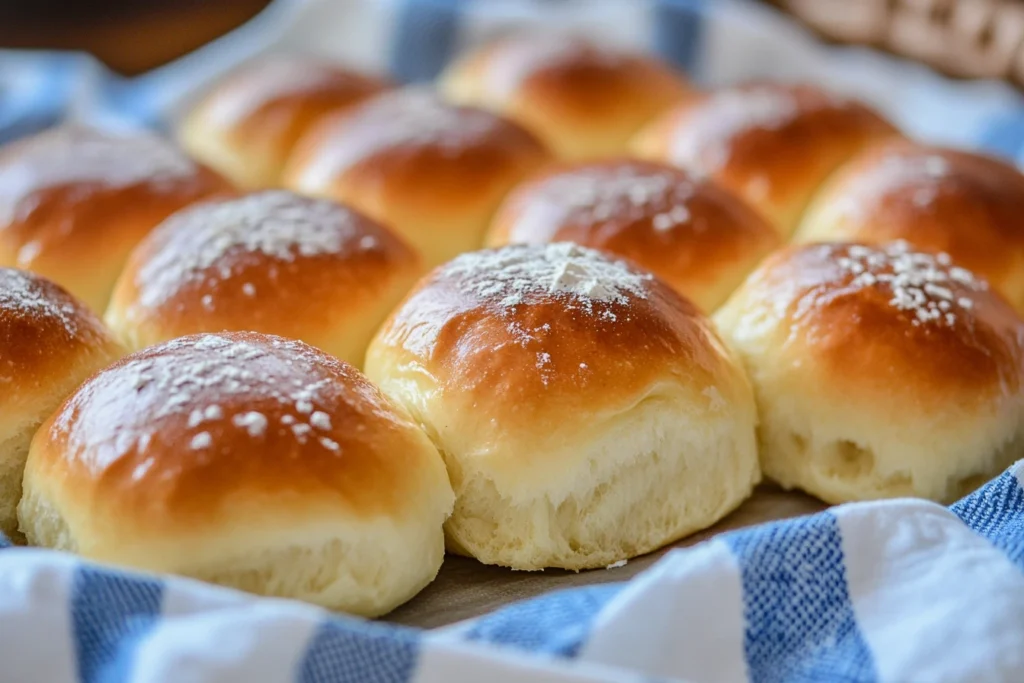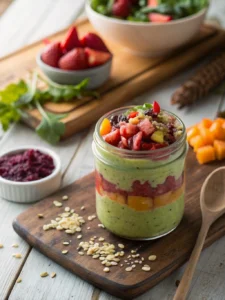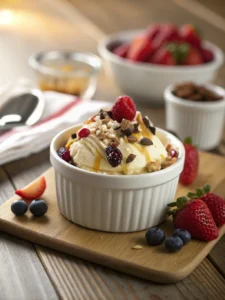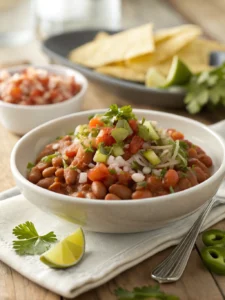Imagine you want warm, buttery dinner rolls but you don’t have yeast. Or maybe you’re in a hurry and can’t wait for dough to rise. No worries, yeast rolls without yeast are here to save the day. They use common ingredients to make soft, fluffy rolls fast.
This guide will teach you to make yeast rolls without yeast. It uses science and pantry staples. Our Recipes Whether it’s for a weeknight dinner or a sudden party, these recipes are quick and delicious. Let’s explore how to make dinner rolls easily and quickly.
Key Takeaways
- No yeast? No problem—learn to bake soft rolls with quick-rising hacks.
- Discover how baking powder and baking soda replace yeast’s role in rising.
- Save time with a recipe that skips proofing and long wait times.
- Customize flavors with add-ins like herbs, cheese, or even Mayo.
- Troubleshoot common issues like dense dough or bland taste.
Understanding the Science Behind Yeast Rolls Without Yeast
Every fluffy roll has a secret: you don’t need yeast to make them rise. To understand yeast rolls without yeast, first learn how traditional rolls work. Yeast eats sugars and makes carbon dioxide gas. This gas gets trapped in the dough, making it soft and airy.
But what if you don’t use yeast?
Why Traditional Rolls Need Yeast
Yeast is a tiny baker that loves warm, sweet places. It eats sugars and makes gas through fermentation. This slow process makes rolls light and tangy. Without yeast, this magic doesn’t happen.
How Leavening Agents Replace Yeast
Modern baking uses chemical reactions instead of yeast. Here’s how:
- Baking powder mixes sodium bicarbonate and acid. It releases gas when you add liquid.
- Baking soda (sodium bicarbonate) works with acids like yogurt or vinegar to lift the dough.
- Carbonated water holds CO₂ bubbles. These bubbles expand when baked, just like yeast.
Benefits of Making No-Yeast Rolls
Goodbye to long waits for dough to rise. Yeast rolls without yeast save you time. No more wondering if yeast is alive or worrying about it overproofing. These recipes always work well.
They’re perfect for busy cooks or beginners. This method makes baking easier without losing flavor or texture.
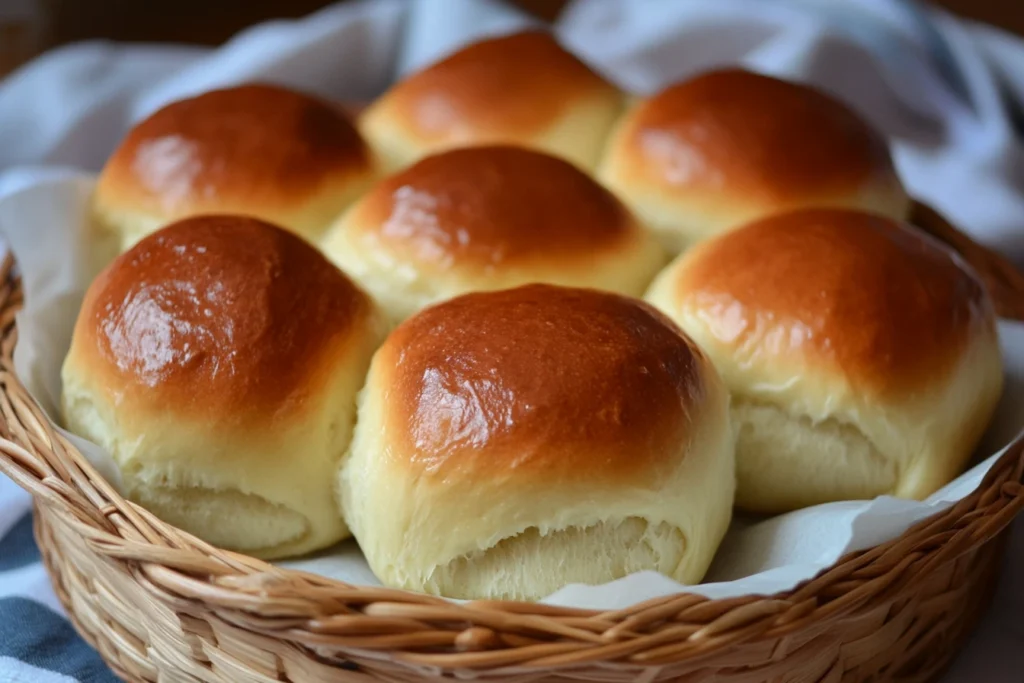
Essential Ingredients for No-Yeast Dinner Rolls
Making no yeast dinner rolls easy starts with the right ingredients. These staples are likely already in your pantry. They ensure quick preparation without specialty items. Let’s break down each part of the recipe:
- Flour: All-purpose flour is the base. For lighter rolls, choose blends with 10–12% protein. Avoid cake flour—it’s too soft.
- Leavening: Baking powder is key for rise. For tangy flavor, pair baking soda with buttermilk or yogurt.
- Fats: Butter adds richness, shortening keeps rolls tender, and oil like vegetable or melted coconut work too.
- Liquids: Warm milk or water activate leavening. Buttermilk gives a sourdough-like taste without yeast.
- Sweeteners: Sugar or honey activate baking powder. Use 1–2 tablespoons for lift and flavor.
- Salt: A pinch (½ teaspoon) balances flavors and strengthens dough structure.
Substitutions simplify no yeast dinner rolls easy even more. Swap flour with whole wheat (but add extra liquid) or almond flour for gluten-free options. Room-temperature ingredients mix better, so let eggs, milk, and butter sit at room temp before mixing. Quality matters: fresh baking powder (unexpired) ensures proper rise. These ingredients work together to create fluffy rolls in under an hour—no waiting for yeast to activate.
Step-by-Step Guide to Making Yeast Rolls Without Yeast
Learning to make homemade buns recipe without yeast is easy. Just follow these steps for perfect rolls every time:
Preparing Your Kitchen and Tools
First, preheat your oven to 375°F. You’ll need a mixing bowl, measuring cups, a spatula, and a greased baking sheet. Make sure your countertops and flour surfaces are clean to prevent dough from sticking. Don’t forget a timer to keep track of baking time.
Mixing the Dough
- In a bowl, mix 2 cups of flour, 1 tbsp of baking powder, and 1 tsp of salt. Whisk until well combined.
- Slowly add 3/4 cup of warm milk and 2 beaten eggs. Keep stirring until a soft dough forms. Stop mixing when the ingredients start to clump together.
- Let the dough rest for 10 minutes. This step is important to avoid making tough buns. Stop mixing as soon as the ingredients come together.
Shaping Perfect Rolls
Divide the dough into 12 equal parts. Roll each part into a ball, making sure to pinch the seams shut. Place the balls on the baking sheet, leaving 2 inches of space between them. This allows the rolls to spread evenly. You can also press a fork tine into the top for extra texture.
Baking Tips for Optimal Results
- Bake at 375°F for 15-20 minutes, or until the rolls are golden brown. Use a toothpick to check if they’re done—when inserted into the center, it should come out clean.
- Once baked, transfer the rolls to a wire rack to cool. This step prevents them from becoming soggy. Serve them warm for the best taste.
- To make the buns even softer, brush them with melted butter right after baking.
By following this homemade buns recipe without yeast, you’ll get light and fluffy rolls. If your oven cooks faster, adjust the baking time. Keep practicing your shaping skills for consistent results.
Flavor Variations for Homemade Buns Without Yeast
Make your homemade buns recipe without yeast even better with these simple flavor changes. You can adjust the dough for any meal, from breakfast to dinner. Try different ingredients to find your favorite:
| Category | Ingredients | Serving Pairings |
|---|---|---|
| Sweet | Cinnamon-sugar swirl, 1 tbsp vanilla extract, dried cranberries | Pair with coffee, maple syrup, or breakfast platters |
| Savory | Garlic powder, grated Parmesan, chopped parsley | Serve with soups, chili, or roasted meats |
| Specialty | Jalapeño bits, sundried tomatoes, rosemary | Match with BBQ dishes or charcuterie boards |
Add 1/4 cup mix-ins to the dough before shaping. For example, fold cinnamon-sugar into rolled dough or knead in herbs like thyme. Brush buns with melted butter after baking for extra taste. Try these toppings:
- Granulated sugar for a caramelized crust
- Everything bagel seasoning before baking
- Cream cheese glaze (2 tbsp cream cheese + 1 tbsp milk)
Try spices like paprika or nutmeg. If adding bulky ingredients, add 1–2 tbsp more liquid. These homemade buns recipe without yeast variations are best when the dough is just mixed. This avoids overworking.
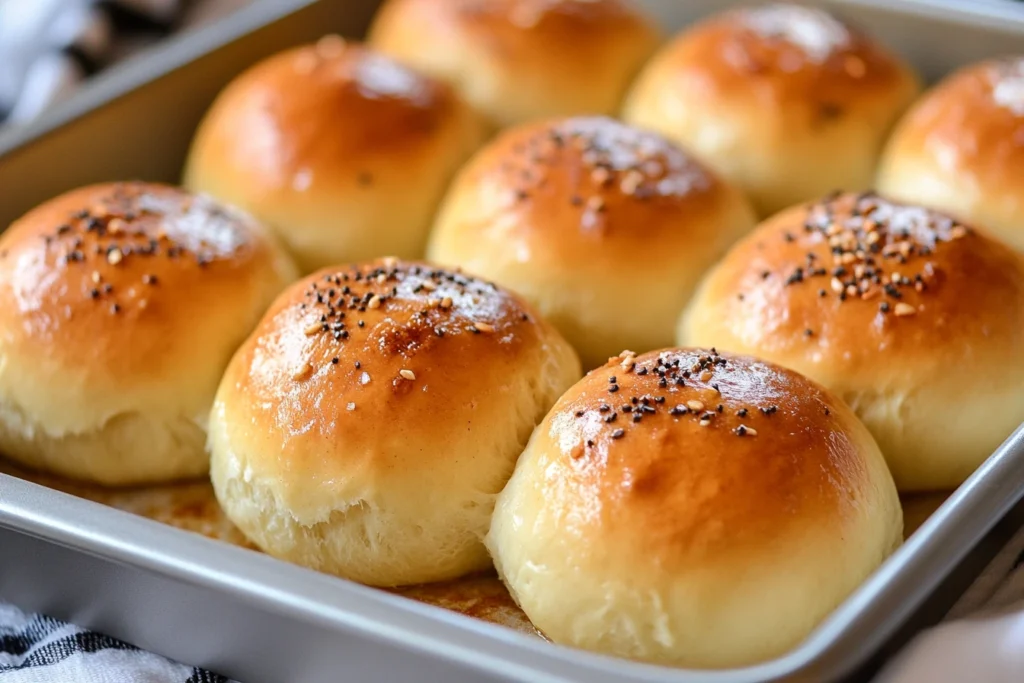
Troubleshooting Common Issues With No-Yeast Rolls
Mastering no yeast dinner rolls easy means knowing how to solve common problems. Let’s look at the most common issues and how to fix them. This way, you can bake with confidence.
Dealing With Dense Texture
Dense rolls often come from too much flour or not baking the dough enough. Here’s how to fix it:
- Check leavening agents: Make sure baking powder/soda are fresh and measured right.
- Stop mixing early: Too much mixing can make dough tough. Mix until it just clumps, then stop.
- Preheat properly: Bake at the exact temperature called for to make leavening work fully.
Fixing Crumbly Dough
A dry dough that crumbles usually has too much flour or not enough moisture. Try these fixes:
- Measure flour correctly: Use the spoon-and-level method to avoid packing flour.
- Add a splash of milk or water: Add 1-2 tablespoons to make the dough moist again.
- Use a spray bottle: Mist flour with water before mixing to spread out dryness.
Addressing Flavor Concerns
Bitterness or blandness can happen if leavening agents overpower the dough. Adjust with:
- Balance acidity: Add a teaspoon of vinegar or lemon juice if the dough tastes metallic.
- Enhance sweetness: Stir in honey or sugar to balance out bitterness from baking soda.
- Boost aroma: Fold in melted butter or herbs like rosemary for more depth.
| Problem | Cause | Solution |
|---|---|---|
| Dense Texture | Overmixed dough or underbaking | Adjust mixing time and oven temp |
| Crumbly Dough | Incorrect flour measurement | Add liquid gradually |
| Bitter Flavor | Unbalanced leavening agents | Increase sweeteners or acids |
Remember, no yeast dinner rolls easy need precise steps. Change one thing at a time to find and fix the problem. This way, you can make perfect rolls.
No Yeast Rolls With Mayo: A Unique Twist
Using no yeast rolls with mayo might seem odd, but it makes the rolls soft and tender. The mayo’s fats and emulsifiers act as natural leaveners. This gives the rolls a unique texture without yeast.
- Mayo replaces some butter or oil, adding moisture
- Its egg content helps bind ingredients for even rise
- Creates a uniquely fluffy interior while staying neutral in taste
A proven no yeast rolls with mayo recipe requires:
| Ingredient | Amount | Role |
|---|---|---|
| Mayonnaise | ¼ cup | Acts as fat + liquid source |
| All-purpose flour | 2 cups | Base structure |
| Milk | ½ cup | Reduced from original recipe |
These rolls taste like classic dinner rolls, not mayonnaise. The mild buttery flavor comes from the mayo’s subtle contribution. This method was used during WWII when ingredients were scarce. Now, it’s a quick way for busy kitchens to make rolls.
Pro tip: Use regular mayo (not low-fat varieties) for best results. Store leftovers in an airtight container at room temperature for up to 2 days. Reheat in a 300°F oven for 5-7 minutes before serving.
Gluten-Free Dinner Rolls Without Yeast
Creating gluten free dinner rolls without yeast is all about the right mix of ingredients and technique. These rolls can be soft and light if you pick the right flours and make the right adjustments.
Best Flour Alternatives
For gluten free dinner rolls without yeast, choose blends that are both tasty and healthy. Here are some top picks:
- Bob’s Red Mill 1-to-1 Gluten-Free Baking Flour for consistent results
- King Arthur Measure for Measure Flour for a soft crumb
- DIY blends: Mix 2 parts rice flour, 1 part potato starch, and 1 part tapioca flour for homemade success
Necessary Adaptations for Success
To make them like wheat-based rolls, you need to adjust a few things:
- Add binders: Use ¼ tsp xanthan gum per cup of flour to avoid crumbliness
- Increase liquid: Add 2-3 tbsp more water than wheat-based recipes
- Mix thoroughly: Stir the dough longer to activate starches in gluten-free flours
Storage Tips for Optimal Freshness
To keep your gluten free dinner rolls without yeast fresh, follow these tips:
- Freezing: Wrap tightly in parchment and foil, then store up to 3 months
- Reheating: Microwave individually wrapped rolls for 20 seconds or oven-bake at 350°F for 10 minutes
- Room-temp storage: Keep in an airtight container for 2-3 days max
Conclusion
Making fluffy, tasty dinner rolls at home is easy without yeast. This guide shows how baking soda and baking powder can help. They make quick, simple rolls without the fuss of yeast.
These recipes are great for when you’re in a hurry or can’t use yeast. They’re also perfect for those who love to keep things simple. You can make everything from classic rolls to gluten-free options.
Remember, the right mix of leavening agents and careful mixing are key. Don’t forget to add your favorite herbs, cheese, or spices. This way, you can make rolls that taste just the way you like them.
Yeast-free rolls open up a world of possibilities in your kitchen. Share your creations, ask for advice, or try new things. With this guide, you’re all set to make delicious homemade rolls anytime. So, get baking and enjoy the ease of yeast-free recipes!
FAQ
Can I really make rolls without yeast?
Yes, absolutely! You can make delicious and fluffy rolls without yeast. Use baking powder or baking soda as leavening agents. These will help your rolls rise and get a fluffy texture.
What are some easy no yeast dinner rolls recipes?
There are many easy no yeast dinner roll recipes. They often use flour, baking powder, and milk. You can also find recipes with mayonnaise or yogurt for extra moisture and flavor.
What is a simple homemade buns recipe without yeast?
A simple recipe for homemade buns without yeast includes flour, baking powder, salt, sugar, milk, and melted butter. Mix the dry ingredients, then add the wet ingredients. Shape into buns and bake until golden brown.
How does mayo work in no yeast rolls?
Mayonnaise adds moisture and richness to your rolls. It helps make them tender without a strong mayo taste.
Are there gluten-free dinner rolls without yeast?
Yes, you can make gluten-free dinner rolls without yeast. Use gluten-free flour blends and add xanthan gum or psyllium husk. These help mimic the texture of traditional rolls.
What common mistakes should I avoid when making no-yeast rolls?
Common mistakes include overmixing the batter, which can make rolls dense. Also, make sure to measure your leavening agents correctly. Bake at the right temperature for the best rise and texture.
Can I add herbs or spices to no-yeast rolls for flavor?
Absolutely! You can add herbs, spices, or even cheese to the dough. This lets you customize the flavor to match your meals perfectly.
